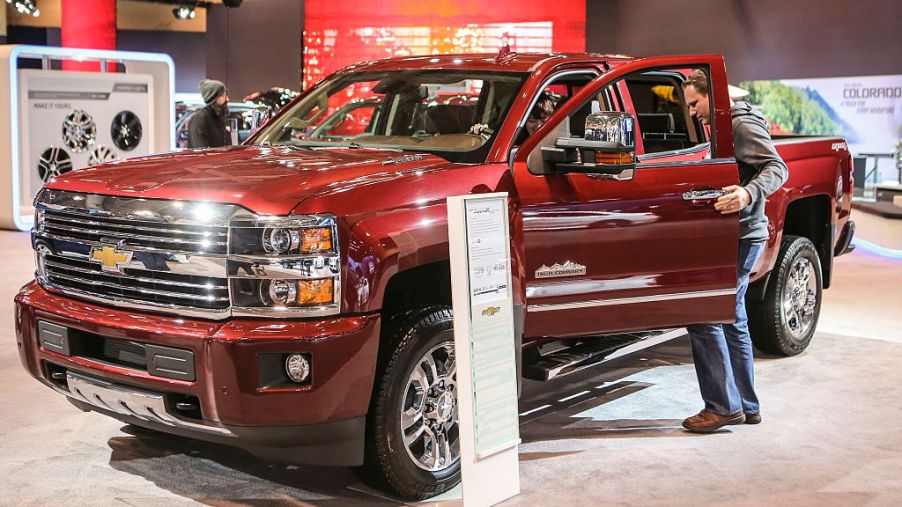
What’s the Difference Between a Chevy 2500 and 3500?
The Chevy Silverado is a popular, full-size truck, but for some Americans, it just isn’t powerful enough. For those Americans, Chevy’s got them covered. Chevy offers heavy-duty versions of the Silverado, and the most popular ones are the Silverado 2500 and the Silverado 3500. While both heavy-duty trucks are largely similar, there’s how these trucks compare with one another.
What the two trucks have in common
Because both the 2500 and the 3500 are based on the Silverado, all three trucks are fairly similar to some degree. In particular, according to Pickup Truck Talk, because the heavy-duty Silverados need a different suspension setup than the regular Silverado does, ride quality overall is rougher and less smooth than what the regular Silverado provides.
Furthermore, on the outside, other than a difference in decal that mentions that one is a 2500 and the other is a 3500, both are extremely similar in terms of appearance. This is the same for the interiors, according to Pickup Truck Talk. What the interior will look like will depend on which package and trim you choose, but if you choose the same one, then they’ll both look about the same, too.
In terms of power, both have the same two engine options. Both offer a 6.6-liter V8 gas-powered engine or a 6.6-liter V8 diesel engine. The gas engine can generate 401-hp and 464 lb-ft of torque while the diesel engine can generate 445-hp and 910 lb-ft of torque.
What’s different between the 2500 and the 3500?
There is one big difference between the Chevy 2500 and 3500 and that is performance. The 3500 has a higher performance figure than the 2500 does. The main reason why the 3500 has higher performance figures is the fact that the 3500 can be equipped with additional dual-rear wheels, according to PickupTrucks.com.
This does require the 3500 to have a slightly heavier-duty suspension system than the 2500 does. As a result, PickupTrucks.com says that the 3500 will have a slightly worse ride quality than the 2500 will. This heavier duty suspension system will give the 3500 a slightly higher maximum gross vehicle weight rating than the 2500 will have, however.
That said, the slightly worse ride quality does result in big dividends in terms of performance. Biggers Chevy says that the 2500, when equipped with the diesel engine, can tow about 15,400 lb.
The 3500, with the same engine, can tow up to 23,100 lb. This is a similar story for the payload capacity. The 2500, with the diesel, can carry about 2,300 lb while the 3500, with the same engine, can carry about 3,800 lb.
One minor difference between the two is in their average fuel economies. The 3500 will get a marginally worse fuel economy than the 2500 will when equipped with the same engine. Fuelly says that the average 2500 gets a fuel economy of about 14 MPG whereas the average 3500 gets a fuel economy of about 13 MPG.
And of course, because the 3500 is a more capable truck than the 2500 is, it’ll cost a bit more. PickupTrucks.com says that the 3500 will cost about $1,200 more on average than the 2500 will.
Which one is better?
This ultimately depends on what you need in a heavy-duty truck. The 3500 can definitely handle more weight, but in most situations, the 15,400 lb towing capacity of the 2500 is more than enough. In terms of everything else, both trucks are very similar, so you can’t go wrong if towing and payload capacity isn’t a big deal for you.



